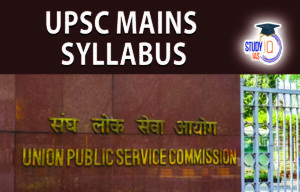Table of Contents
Introduction
- Begin your answer, highlighting the status of freshwater scarcity in the world.
- The UN Water Development Report of 2023 reveals that between two and three billion people globally face water shortage.
- UNICEF’s projections are equally dire, forecasting that by as early as 2025, half of the world’s population could be living in areas plagued by water scarcity.
Body
You can briefly mention the causes of acute shortage of clean and safe freshwater, highlighting the need why we need alternative technologies.
- Limited Freshwater Supply: Earth’s freshwater constitutes only 3%, with 2% locked in ice caps and, thus, unavailable for use.
- Population Growth
- Over-extraction for Agriculture: Agriculture consumes about 70% of the global freshwater supply.
- Impact of Climate Change: e.g., The Hindu Kush Mountains risk losing up to 80% of glacier volume this century, affecting water availability significantly.
- Water Pollution: Agricultural run-off, industrial waste, and sewage contribute majorly to freshwater contamination
- Deforestation→disrupts the natural water cycle, diminishing freshwater availability through decreased rainfall and increased run-off.
Alternative Technologies to solve global freshwater shortage
| Technology | Details & Example of Use | Merits | Demerits |
| Desalination | -Salt from saltwater is extracted to obtain freshwater
E.g., Shoaiba and the Al Jubail complexes in Saudi Arabia can each produce over 800 million litres per day. |
– Converts seawater into freshwater, providing an almost limitless supply.
– Useful in coastal areas where freshwater is scarce. |
– Energy-intensive and expensive, leading to high operational costs.
– Brine disposal can harm marine ecosystems. |
| Photocatalytic Water Purification | -Uses photocatalyst and ultraviolet rays to rid water of toxic substances and contaminants at high speeds.
E.g., IIT-J developed low cost photocatalytic purification system |
-Simple process
-cost-effective and Sustainable -Can remove substances such as pesticides, microbes, viruses, dyes, crude oil, and more. |
-Low Deposition rates
-Chemical Hazards – Scalability issue |
| Automatic Variable Filtration | -it works when an upward flow of influent is cleaned through a downward flow of filter media.
-E.g., Pashan Lake water treatment |
– Efficient filtration system adaptable to varying water quality.
– Cost-effective with minimal maintenance and energy requirements. |
– Limited scalability for large-scale municipal use.
– High upfront installation costs |
Examples of Technology use to address freshwater shortage in India
- Uruva Labs: has developed a patented technology that can produce drinking water from inexhaustible atmospheric moisture.
- WaterATM:–> state-of-the-art water ATM system that incorporates advanced purification technologies.
Conclusion
- Highlight the need for a multidimensional approach encompassing conservation, sustainable practices, technological innovation, and policy reforms to address acute shortage of freshwater.
- You can add a best practice-Water Recycling (NEWater) of Singapore which treats and purifies wastewater to meet up to 40% of the nation’s water demand.


 NCERT Books for UPSC Preparation, Check ...
NCERT Books for UPSC Preparation, Check ...
 UPSC Syllabus 2025, Check UPSC CSE Sylla...
UPSC Syllabus 2025, Check UPSC CSE Sylla...
 UPSC Mains Syllabus 2025, Optional Sylla...
UPSC Mains Syllabus 2025, Optional Sylla...





















